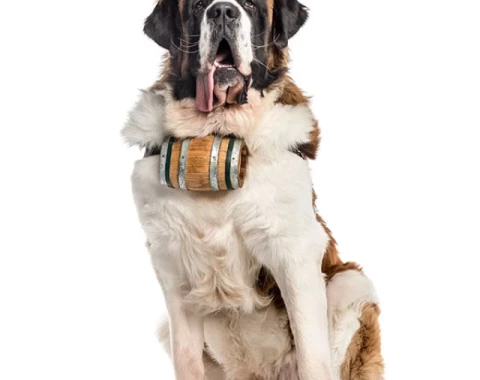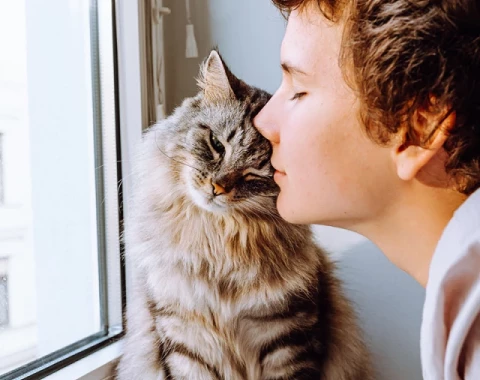Wavy parrots
2023-08-11
Birds

Wavy parrots are originally inhabitants of inland areas and the coast of Australia. The first records of these birds date back to the 18th century, when European travellers began to describe the exotic species they encountered during their expeditions. However, Wavy parrots only gained more attention in the second half of the 19th century.
In 1840, a British explorer brought the first wavy parakeets to Europe. They soon became popular as exotic birds for breeding in zoos and private collections. In 1845, wavy parrots were scientifically described and in 1867, the first book on these birds was published.
Breeding wavy parakeets can be a fascinating experience, but it requires the right knowledge, commitment and preparation. Here are some steps to consider if you want to take up breeding these adorable birds:
Before you start breeding, explore the knowledge of Wavy parrots, their needs, reproductive behaviour, care of young birds, etc. There are many sources available such as books, articles and online forums that can help you gain knowledge.
When selecting pairs for breeding, pay attention to the health, age and general condition of the birds. Pairs should be peaceful and in good health. Try to avoid close kinship.
Wavy parrots are birds that need the right conditions and care to stay healthy and well. Choose a suitable cage that provides enough space for the birds to move around. The cage should be large enough for the birds to spread their wings and fly freely inside. Wavy parrots are social birds, so they are best kept in pairs or groups.
Place branches, rods and a variety of toys in the cage to keep the birds active and climbing. Additionally, place food bowls, water and mineral stones in the cage to help the birds process their food.
Place the cage in a place where it is not exposed to direct sunlight, draughts and fluctuating temperatures. Avoid locations near doors, windows or where there are large changes in noise. Maintain a constant temperature in the room where the cage is located. Wavy parakeets are sensitive to sudden changes in temperature. Humidity should be at a level acceptable to humans.
Clean the cage regularly, removing food residues, faeces and changing the water. A clean cage will contribute to the health of the birds and prevent the development of disease.
Wavy parakeets, are birds that need a varied and balanced diet to maintain their health and well-being.
Commercialised seed mixes for Wavy parrots are available in pet shops. These mixes usually contain a variety of grains such as millet, wheat, oats, sunflower seeds, millet, canary seed and others. Make sure the mixture is of high quality and fresh. Wavy parrots like variety in their diet, so it is a good idea to feed them fresh vegetables and fruit. Suitable ones include carrots, broccoli, cabbage, peppers, spinach, apples, pears and others. It is advisable to transform them into appropriately sized pieces. Hard boiled eggs provide your Wavy parrots with important proteins. You can cut them into smaller pieces and give them to the birds as a treat.
To make sure your parakeets get all the nutrients they need, you can use powdered vitamin supplements to add to their food. Ensuring access to minerals in the form of mineral pebbles, calcium or salt is important for the health of parakeets. It is a good idea to choose those that are specifically designed for birds.
Avoid overfeeding sweets, fatty and processed foods. Wavy parrots can take in fats in small amounts, such as with cashew nuts or sunflower seeds, but this should not make up the bulk of the diet.
Wavy parrots, are birds that need a varied and balanced diet to maintain their health and well-being.
In 1840, a British explorer brought the first wavy parakeets to Europe. They soon became popular as exotic birds for breeding in zoos and private collections. In 1845, wavy parrots were scientifically described and in 1867, the first book on these birds was published.
Breeding wavy parakeets can be a fascinating experience, but it requires the right knowledge, commitment and preparation. Here are some steps to consider if you want to take up breeding these adorable birds:
Before you start breeding, explore the knowledge of Wavy parrots, their needs, reproductive behaviour, care of young birds, etc. There are many sources available such as books, articles and online forums that can help you gain knowledge.
When selecting pairs for breeding, pay attention to the health, age and general condition of the birds. Pairs should be peaceful and in good health. Try to avoid close kinship.
Wavy parrots are birds that need the right conditions and care to stay healthy and well. Choose a suitable cage that provides enough space for the birds to move around. The cage should be large enough for the birds to spread their wings and fly freely inside. Wavy parrots are social birds, so they are best kept in pairs or groups.
Place branches, rods and a variety of toys in the cage to keep the birds active and climbing. Additionally, place food bowls, water and mineral stones in the cage to help the birds process their food.
Place the cage in a place where it is not exposed to direct sunlight, draughts and fluctuating temperatures. Avoid locations near doors, windows or where there are large changes in noise. Maintain a constant temperature in the room where the cage is located. Wavy parakeets are sensitive to sudden changes in temperature. Humidity should be at a level acceptable to humans.
Clean the cage regularly, removing food residues, faeces and changing the water. A clean cage will contribute to the health of the birds and prevent the development of disease.
Wavy parakeets, are birds that need a varied and balanced diet to maintain their health and well-being.
Commercialised seed mixes for Wavy parrots are available in pet shops. These mixes usually contain a variety of grains such as millet, wheat, oats, sunflower seeds, millet, canary seed and others. Make sure the mixture is of high quality and fresh. Wavy parrots like variety in their diet, so it is a good idea to feed them fresh vegetables and fruit. Suitable ones include carrots, broccoli, cabbage, peppers, spinach, apples, pears and others. It is advisable to transform them into appropriately sized pieces. Hard boiled eggs provide your Wavy parrots with important proteins. You can cut them into smaller pieces and give them to the birds as a treat.
To make sure your parakeets get all the nutrients they need, you can use powdered vitamin supplements to add to their food. Ensuring access to minerals in the form of mineral pebbles, calcium or salt is important for the health of parakeets. It is a good idea to choose those that are specifically designed for birds.
Avoid overfeeding sweets, fatty and processed foods. Wavy parrots can take in fats in small amounts, such as with cashew nuts or sunflower seeds, but this should not make up the bulk of the diet.
Wavy parrots, are birds that need a varied and balanced diet to maintain their health and well-being.
Content added:
RaV




